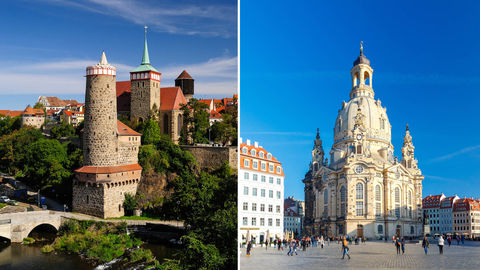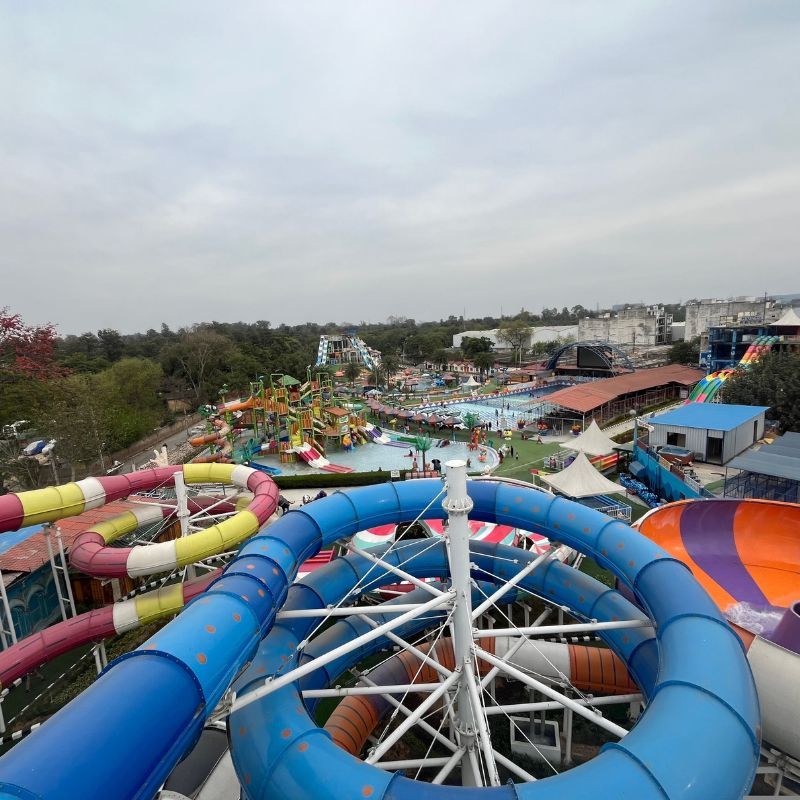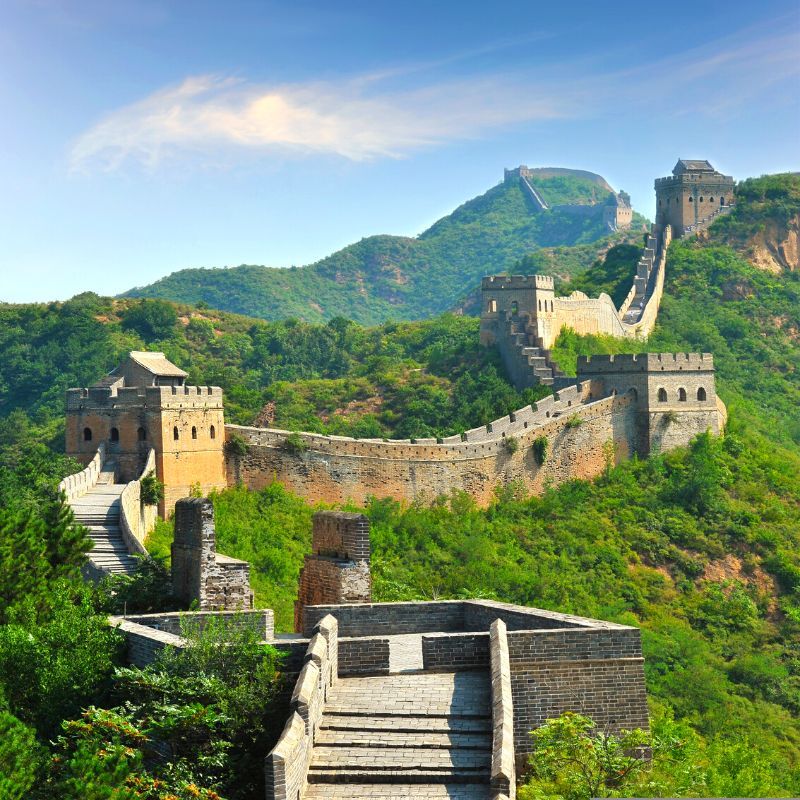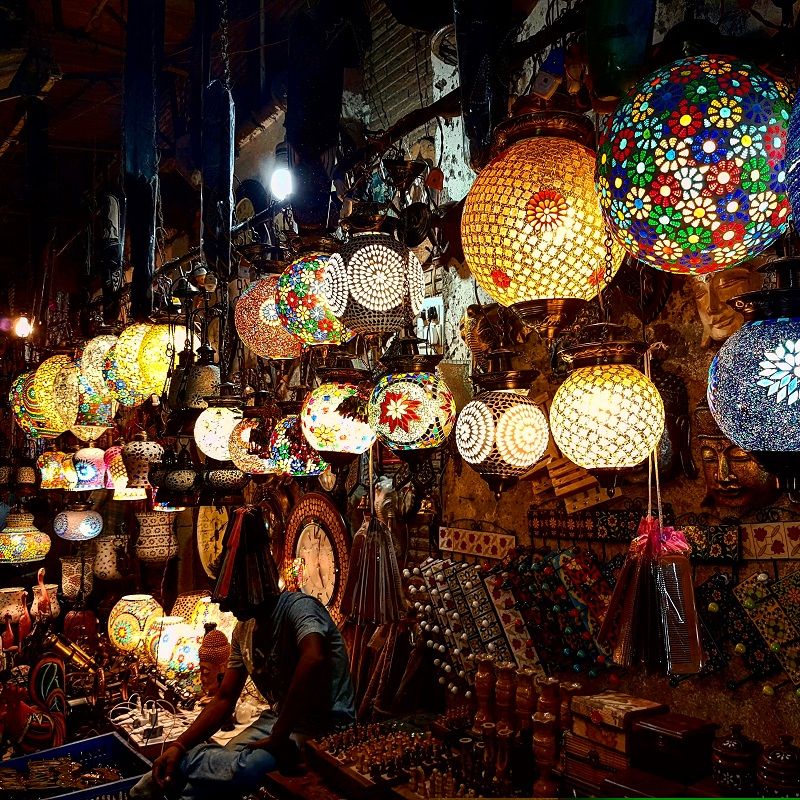
Drive through Germany’s easternmost state, Saxony, to experience historical breweries, one mug at a time. By Amrita Das

A day before the start of my beer trail in Saxony, Germany’s easternmost state, I sat with the map of Via Romantika (not to be confused with the southern Romantic Road) to understand the distances and history involved in my imminent tour. On a 120-kilometre drive, I would stop at five breweries in varied regions—from the capital city, Dresden, to the eastern medieval town of Görlitz. These had been carefully picked for their historical background, supreme quality, and popularity among the locals.

With the rise of craft breweries across the world and Germany still implementing the 500-year-old Reinheitsgebot, or German beer purity law (which states that beer must be made of only four ingredients: barley, hops, yeast, and water), how much business do these
local brands do? For a cursory check, I decided to visit Dresden’s own Watzke am Goldenen Reiter on Hauptstraße. I was welcomed to take a seat by the bar, but for a table in the evening, I had to wait for about five minutes. German amber nectar topped every table, while some patrons conversed indulgently and others enjoyed a moment of solitude. Evidently, there was no lack of takers for authentic and ‘pure’ German beer.
Brauerei 1
Watzke Ball-Und Brauhaus, Dresden

Across river Elbe in Saxony’s capital, Watzke Ball- und Brauhaus (Watzke Ballroom and
Brewhouse) has been a symbol of Saxony’s past. The Watzke family first received a concession to make beer and wine in 1838. It was only in 1898 that the ballroom was constructed. After an extended period of war and the Reunification, the ballroom and brewery on the ground floor was renovated over three years. It finally opened its doors in 1996. It is no longer run by the Watzke family but a group of investors, who have expanded the brand across the city.
The Sudhaus is where the malts are mashed with high temperature water in stainless steel vessels (covered with copper bodies to give a traditional feel). The hot brew is separated
from the wort and goes into the fermentation cellar (in the basement) to cool down. Once the temperature is ideal, yeast is added to sugar to make the alcohol. On an average, Watzke brews 3,200 litres of beer in one day—making it one of the biggest microbreweries in Germany.

I tasted the Watzke Pils and Watzke Altpieschner Spezial. The cloudy brews were distinctly
different in colour and taste. The pilsner was negligibly bitter with thin lacing. On the other hand, the Altpieschner Spezial’s dark amber colour carried a deceivingly sweet taste. Having tasted such strikingly contrasting brews made from the same four ingredients,
differing only in proportion, I understood that every beer in Saxony would have its own
distinct character.
TIP: Watzke has a special beer calendar for the year where seasonal beers and monthly specials are offered.
Brauerei 2
Radeberger Brewery, Radeberg

Driving eastwards out of Dresden, the quiet town of Radeberg is known for its historical Radeberger Exportbierbrauerei on Dresdener Straße. It was merely six years after its inception in 1872 that Radeberger began exporting its fine golden pilsner to USA. This was primarily done to boost the economy, which also meant that it did not reach the locals.

Positioned as ‘Pilsner Perfection’, Radeberger is obsessive about its quality. It continues to source water from the same forest (around the Ore Mountains) and cultivate its own yeast. My guide mentioned its objectives, ‘always be the best beer of its time’ and ‘customers
expect a clear pilsner’, more than once during the tour.
One tank of Radeberger packs about 6,00,000 half-litre bottles, which go across the world,
including AIDA cruises, where guests get Radeberger from the taps as well.

After a quick brewery tour, I walked to Hotel Kaiserhof’s charming Radeberger Brewery Bar. Here, Radeberger’s brews are available on tap along with the unfiltered, cloudy pilsner (Zwickelbier). But Kaisersaal, or the Imperial Hall, on the first floor was my main focus. This historical hall continues to host events, its light-coloured ceilings and restored columns adorned by contrasting elegant curtains. The golden Radeberger logo is the highlight of the grand bar.
TIP: Radeberger Exportbierbrauerei has regular brewery tours for €12 (₹963), which
include tasting and a laboratory experience, where participants can pour the pilsner in the
golden-laced Radeberger glass, which they take home as souvenirs.
Brauerei 3
Bautzener Brauhaus, Bautzen

The drive to Bautzen was the highlight of this trip. I sat admiring the highway stretch to flat, barren fields, and beyond, I could see green hillocks rise gently. On occasion, I passed through small hamlets with traditional houses. But that landscape changed as I turned away from the highway to Bautzen’s Friedensbrücke. Iconic structures that define Bautzen—Alte Wasserkunst (Old Waterworks), Nicolaiturm (St Nicholas Tower), Schülerturm (Scholar’s Tower), Reichenturm (Leaning Tower), and Lauenturm (Lauen Tower)—glowed under the orange light of the early evening sun.

I was greeted by Karsten Herrmann, the owner, once I arrived at Bautzener Brauhaus on
Thomas-Mann Straße. The first site of the brewery dates back to 1847, however, the current brewery and beer garden were established in 1927. Herrmann bought the brewery in 1996, and since then, it has been continuously brewing Bautzen’s favourites and season specials.
The copper-coloured Kupfer is the bestseller here. It makes for 50 per cent of the production. Other favourites include Original (pilsner), Kräusen, and Schwarzes (black). They also experiment with new flavours like Märzen (which is brewed after October and before April) and Beizen (which the brewmaster was hesitant to try owing to the difference in the fermentation process). They sell to 25 restaurants in Bautzen, and retail bottled beers in and around Dresden and Pirna.
All six tasters were placed in front of me as we stood under a chestnut tree (mandatory
feature of every beer garden). My favourite had to be Schwarzes. The malty dark lager was lightly bitter, extremely smooth. I found very little variation between the cloudy Kräusen and the Original, which was a little more bitter and more unfiltered than the former. This was where I understood how the German purity law could result in overlaps. But Herrmann put my doubts to rest as he concluded the conversation, “In Germany, we are proud of purity laws.”
TIP: Bautzener Brauhaus has brewery tours with diploma, which start at €9.90 (₹794) for groups on prior booking.
Brauerei 4
Landskron Brewery, Görlitz

My drive to Görlitz was flanked by young poplar trees, though I could not wait to explore this medieval town after my two scheduled brewery visits. First was the brewery that advertised itself as ‘the easternmost brewery of Germany’ for the longest time—Landskron Brewery. It dates back to 1869, and is very popular for its historical monument, apart from the beer. It churns out 1,50,000 hectolitres of beer annually.

Landskron is known for its deep cellars. In the brick-wall establishment, the cellar goes
down 12 metres. Kegs are cooled by air at a temperature between 0° C and 3° C. This was also the oldest part of the four-hectare property. In the tasting room, I sat along with the group for an introductory film on the brewery, followed by tastings. Landskron’s pilsner is unsurprisingly the bestseller. The clear golden was perfect for a summer day.
TIP: There are limited tours in English. Book in advance for EUR 14 (INR 1,123).
Brauerei 5
Obermühle Görlitz, Görlitz
I went from one side of River Neisse to the other, while remaining on the German side of
the border. Görlitz is the last town on the German-Polish border to be divided by this river and connected by a pedestrian bridge, Altstadtbrücke (Old Town Bridge). Obermühle Görlitz, a young brewery, was the most scenically located brewery I visited. This was a flour mill until 1994, when it closed down. I walked around the riverbank stretching from yesteryear’s mills (now an inn and brewery) to Neisse Viaduct appearing amid thick forests. An occasional train would pass on it, taking passengers from Görlitz to Zgorzelec in Poland.

Obermühle Görlitz’s small unit produces a cloudy Pilsner and a reddish Helles (lager). Complementing the fresh brews was their slow-food certified restaurant. They take pride in
producing their own pasta, vegetables, and bread, along with their ales.
TIP: Obermühle Görlitz is the perfect spot for lunch by the river. Try anything from their seasonal menu with a pilsner.
Getting There
Many airlines, including SWISS and Lufthansa, operate one-stop flights from Delhi and Mumbai to Dresden.
Stay
Dresden: InterCityHotel Dresden is excellently located. It offers a FreeCityTicket to all its guests. Doubles from INR 5,300.
Bautzen: Best Western Plus Hotel Bautzen is across the street from the town centre. Doubles from INR 6,800.
Görlitz: The four-star Romantik Hotel Tuchmacher has elegant rooms and is located in the heart of the old town. Doubles from INR 8,500.
Tips
-Drinking and driving is a punishable offence in Germany. Have someone drive you on the beer trail.
-Photography is restricted in certain breweries, so ask before clicking.
Related: Did You Know About The Monks Who Brew Beer In Trappist Monasteries?










